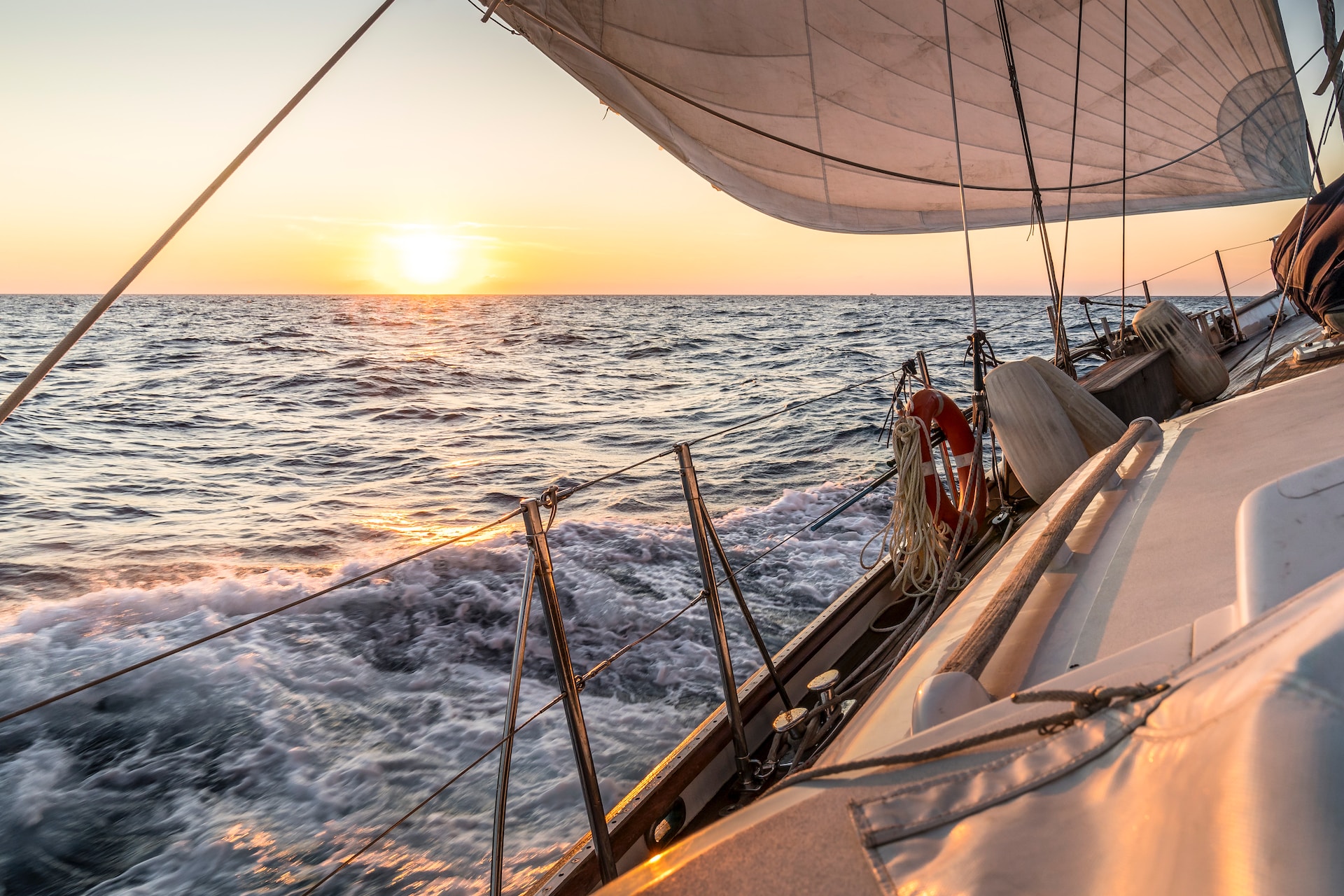
Maintaining the rigging on a national historic landmark
is hard work – but worth it!
The Claud W. Somers is a member of the Chesapeake Bay’s historic skipjack fleet, a dwindling number of old wooden oyster boats numbering a mere 24 hulls still sailing. The majority of these are owned by non-profits, with less than a third of the vessels still dredging commercially for oysters.
Owned by the Reedville Fishermen’s Museum in Virginia’s Northern Neck, the Somers was acquired and refurbished by Museum volunteers in 2000. After a period of inactivity as a dock-side attraction, the Somers’ volunteer crew spent 2015 and 2016 working on the vessel in the Yard, at the dock and under sail.
Having successfully re-acquired her US Coast Guard (USCG) Certificate of Inspection at the end of the 2016 sailing season, the crew is now prepping for her 2017 season as an inspected passenger vessel. Thanks to USCG Navigation and Vessel Inspection Circular No. 02-16, the Somers has increased inspection and maintenance standards for her standing rigging.
 Like most skipjacks, the Somers carries an enormous amount of sail, in this case approximately 1300 square feet of canvas on a 56 foot vessel (LOA). Her standing rigging consists of two shrouds on either beam, with a load bearing jib stay and a non-load bearing fore stay.
Like most skipjacks, the Somers carries an enormous amount of sail, in this case approximately 1300 square feet of canvas on a 56 foot vessel (LOA). Her standing rigging consists of two shrouds on either beam, with a load bearing jib stay and a non-load bearing fore stay.
The shrouds and jib stay attach to a mast band approximately three quarters of the way up her 56 foot mast, while the fore stay goes to the masthead. The wire used for the shrouds is 5/8 inch diameter 6 by 19 plow steel with an oil saturated fiber core, while the jib stay is 1/2 inch diameter.
The bob stays (inner and outer) and whisker stays for the bow sprit are 5/8 inch diameter galvanized chain. Though she uses turnbuckles for her stays (jib stay, whisker stays and bob stays), she has the traditional deadeyes and lanyards for the shrouds.
On my modern sloop, I inspect my stainless steel standing rigging annually and usually coat it with a mixture of anhydrous lanolin and mineral spirits every six months or so. The same regimen is used on the Somers, though we maintain all inspection and maintenance documents for the USCG.
Preservative for standing rigging on traditional vessels today is a mixture of pine tar, linseed oil and various other agents. We considered using that on the Somers, but eventually decided to go with a modern product.
Skipjacks did not historically worm parcel and serve their standing rigging, so bare steel is generally being preserved. The crew take turns being hauled aloft in the bosun’s chair to wire brush off any surface rust and then apply the preservative.
The modern wire preservatives may not have the same cache of homemade traditional preservatives. However, the application is easier and though still flexible when dry to the touch, doesn’t leave pine tar on the clothes of passengers.

Deadeyes and lanyards are two – four inch wooden disks with three holes (deadeyes) through which a fiber line (lanyard) is reeved. Though pointless on modern sailboats, they are traditional, in many ways beautiful and they serve a purpose.
Skipjack rigs are flexible laterally, due to the natural bend of the wooden mast under load. The lanyards between the deadeyes allow a certain flexibility in the rig that wouldn’t be possible with turnbuckles.
In order to set them up, it’s necessary to pre-load the lanyards in order to take most of the elasticity out of them prior to setting them up. This may seem counter-intuitive given the previous statements about flexibility, but the rig will slacken over time without it.
On the Somers, we use the main halyard to take up on the lanyard after it’s reeved through the holes in the deadeyes. The main halyard has a five-part purchase so gives more than enough mechanical advantage.
The lanyard exits the lower deadeye, is hitched to the lower main halyard block and then the crew hauls on the halyard. When the lanyard is hauled as taunt as it can be, a marlin spike is jammed in the lower deadeye to keep the lanyard from slipping.
The crew then slacks off the halyard, the lanyard freed and passed around the upper shroud in a cow hitch. The bitter end of the lanyard is seized back onto itself, the marlin spike removed and the shroud allowed to settle.
To be honest, I do more work on the rigging of the Somers during inspection and maintenance in a single day than I spend on my own boat in a month. But when we get to sail her it’s all worth it.
But where else can you sail as volunteer crew on a 106 year old National Historic Landmark?
Trending Now: Must-Have Boat Gear for Your Boat Life
Trending Now: Custom Boat Decor
-
Boat Pillow with Boat Name & LAT LONG Coordinates
Quick ViewBuy on Etsy -
Boat Pillow with Boat Name & LAT LONG Coordinates- Black
Quick ViewBuy on Etsy -
Coastal Blue Stripes Bathmat with Anchor & Boat Name
Quick ViewBuy on Etsy -
Custom Boat Mat with Boat Name & LAT LONG Coordinates
Quick ViewBuy on Etsy
Disclosure: This site may contain links affiliated with companies where we receive compensation. Also, as an Amazon Associate we may earn from qualifying purchases we refer but it does not impact the price you pay. Full disclosure policy.











